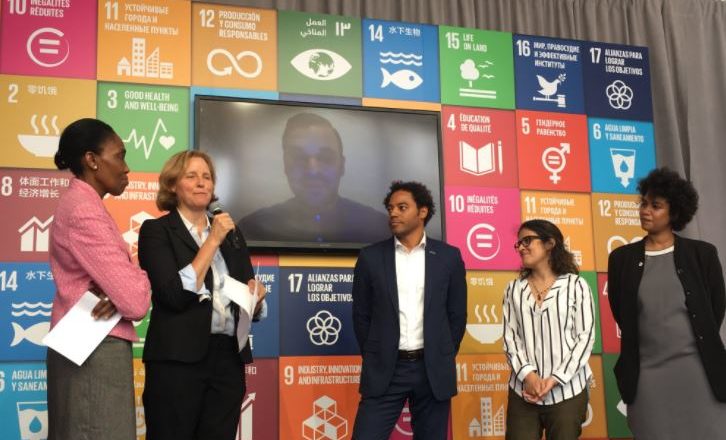In a world where ‘bad’ news has become the norm, there is need to find happy moments and hold onto them. It is very easy to get sucked up in all things war, disease, famine, corrupt leaders, and bad governments. Because that is what apparently news is these days. But there a lot of good things happening. And when we find those, its important that we stop to take note, and celebrate those who are making them happen.
This is why I was so encouraged by the Solutions Hour happening alongside the UN General Assembly this year at an area dubbed the SDG Media Zone. The hour was dedicated to mainly highlight initiatives that have been more than exceptional in developing and using innovative solutions that are geared towards addressing the Sustainable Development Goals (SDGs).
There are so many great people doing great things that have the potential to change the world — and today I salute them. I also noticed that for the 2 days I attended the Solutions Hour, there were more women showcasing solutions than there were men— which speaks a lot more to me. Women, when empowered, have the power to change the world.
Here are some of the featured solutions: Women working to make the world a better place.
Sakena Yacoobi — Afghanistan Learning Institute
Her main idea is literacy via text messages
Afghanistan is well known for war, poverty, and bloodshed — for the last 15 years or so. And so when a lady of over 45 years of age shares her story about how she is using text messages to educated girls — it is life changing. Sakena has been doing this since 2012. In four months, young girls and women are able to read and write to a fourth grade level.
Sakena’s Afghanistan Learning Institute is the only classroom literacy program in Afghanistan that combines learning to read with texting over mobile phones. The program provides life skills, core values, critical thinking skills, and boosts creativity all via mobile phones and text messages. To date, 53 mobile literacy classes have been completed with nearly 1,700 graduates. 80% of the students read and write at a 4th grade level and continue their education with other institutions. 100% of the graduates know how to use a mobile phone and are confident in their abilities. You should see the spark in her eyes as she shares her story and because of what she does — she has been nicknamed the Mother of Education in Afghanistan. An amazingly brave woman.
Victoria Alonsoperez — Chipsafer
Her main idea is a livestock tracking technology and dashboard
This resonated a lot with me because part of their work has been done on the African continent in countries like Kenya. Chipsafer is an innovation that is used to track animals, especially cattle remotely and autonomously. Victoria started out in 2012, in Uruguay, and now Chipsafer is being used in countries like Australia, Brazil, and Luxembourg, and trials been done in Kenya and South Africa.
How it primarily functions is that the information collected by a device on the animal is transmitted to servers providing actionable information about the performance of the livestock enabling rural farmers to improve production and protect precious livestock.
Blanche Awafack — Gifted Mom
Her main idea is a two- way communication app/SMS to inform maternal health
Coming from a country where maternal mortality rate is 43 deaths per 1000 live births — this solution speaks to me a lot. Awafacl’s innovation is the kind that makes a difference in so many Global South communities if put into proper use.
Via mobile text and voice messaging, Gifted Mom delivers stage-based and customized notifications for pregnant women and new mothers, with information on topics like when to go their next antenatal care session or to receive baby vaccinations. So far, over the past two years, Gifted Mom has contributed to improved antenatal care attendance by up to 80% in some urban areas and up to 64% in some rural areas. The SMS messaging has also improved vaccination outcomes turnouts by 90% in some health facilities.
